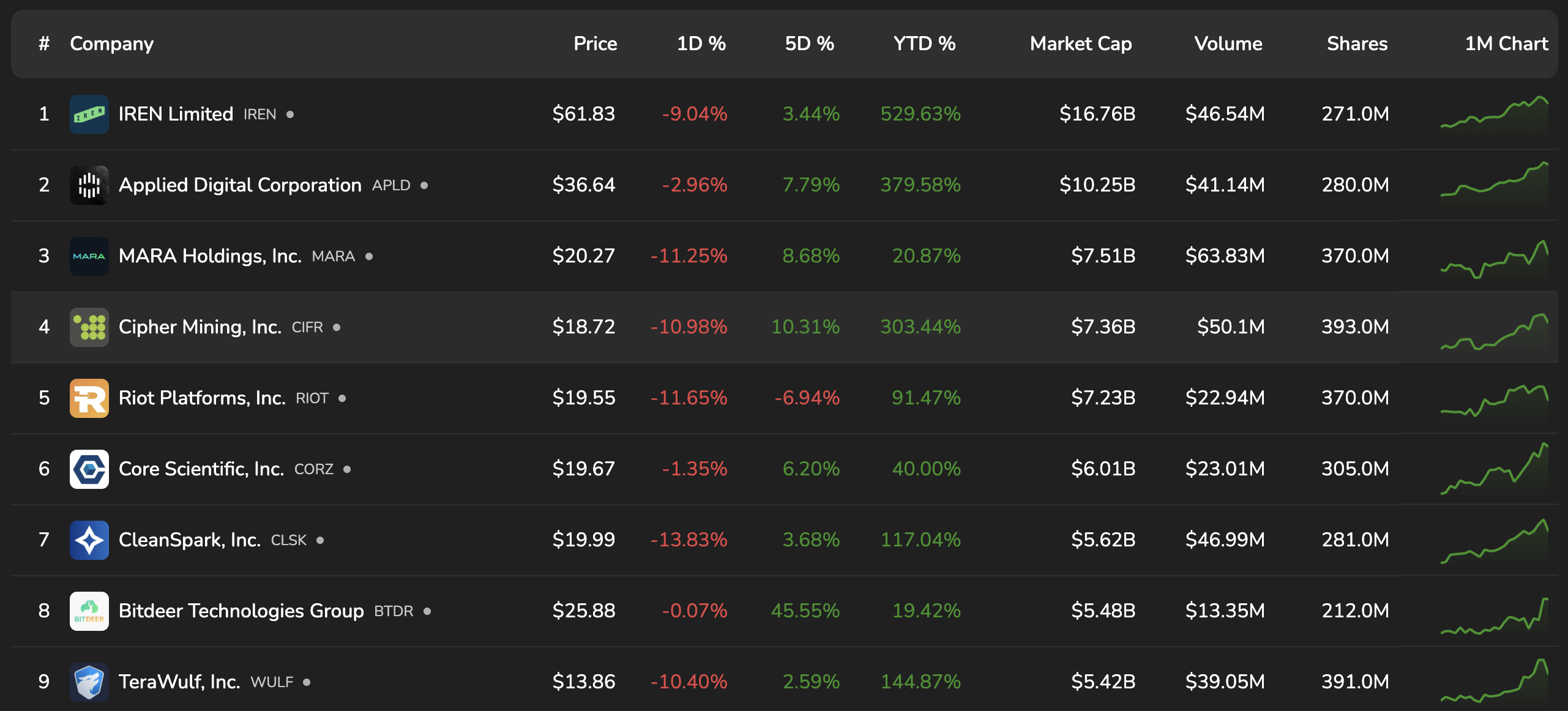Public Mining Companies Raise Billions in Debt to Fund AI Pivot

Major public mining companies are aggressively raising billions of dollars through convertible bonds, the largest capital push since 2021.
This could mark a turning point toward AI expansion, but also carries the risk of equity dilution and mounting debt pressure if profits fail to accelerate.
A New Wave of Large-Scale Debt Issuance
The year 2025 marks a clear shift in how Bitcoin miners raise capital. Bitfarms recently announced a $500 million offering of convertible senior notes due 2031. TeraWulf proposed a $3.2 billion senior secured note issuance to expand its data center operations.
According to TheMinerMag, the total value of convertible and debt note issuances from 15 public mining companies reached a record $4.6 billion in Q4 2024. That figure fell below $200 million in early 2025 before surging again to $1.5 billion in Q2.
Consolidated cash flow activities of public mining companies. Source: TheMinerMag
This capital strategy mirrors what MicroStrategy has done successfully in recent years. However, today’s debt model fundamentally differs from the 2021 cycle in the mining industry. Back then, ASIC mining rigs were often used as collateral for loans.
Public mining companies increasingly turn to convertible notes as a more flexible approach to financing. This strategy shifts financial risk from equipment repossession to potential equity dilution.
While this gives companies more breathing room to operate and expand, it also demands stronger performance and revenue growth to avoid weakening shareholder value.
Opportunities and Risks
If miners pivot toward new business models, such as building HPC/AI infrastructure, offering cloud computing services, or leasing hash power, these capital inflows could become a powerful growth lever.
Diversifying into data services promises longer-term stability than pure Bitcoin mining.
For instance, Bitfarms has secured a $300 million loan from Macquarie to fund HPC infrastructure at its Panther Creek project. Should AI/HPC revenues prove sustainable, this financing model could be far more resilient than the ASIC-lien structure used in 2021.
The market has seen a positive reaction from mining stocks when companies announce debt issuances, with stock prices rallying as the expansion and growth narrative is emphasized. However, there are risks if expectations are not met.

Shares of mining companies. Source: bitcoinminingstock
Suppose the sector fails to generate additional income to offset financing and expansion costs. In that case, equity investors will bear the brunt through heavy dilution — instead of equipment repossession as in previous cycles.
This comes when Bitcoin’s mining difficulty has reached an all-time high, cutting into miners’ margins, while mining performance across major companies has been trending downward in recent months.
In short, the mining industry is once again testing the limits of financial engineering — balancing between innovation and risk — as it seeks to transform from energy-intensive mining to>Public Mining Companies Raise Billions in Debt to Fund AI Pivot appeared first on BeInCrypto.





